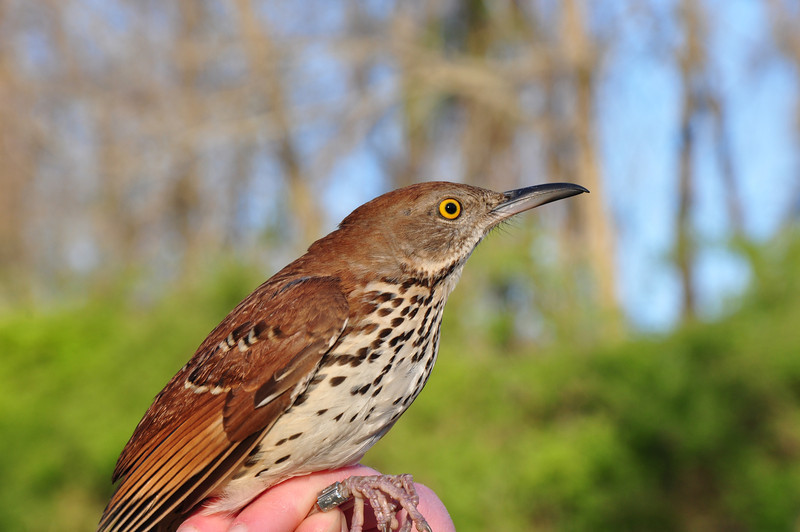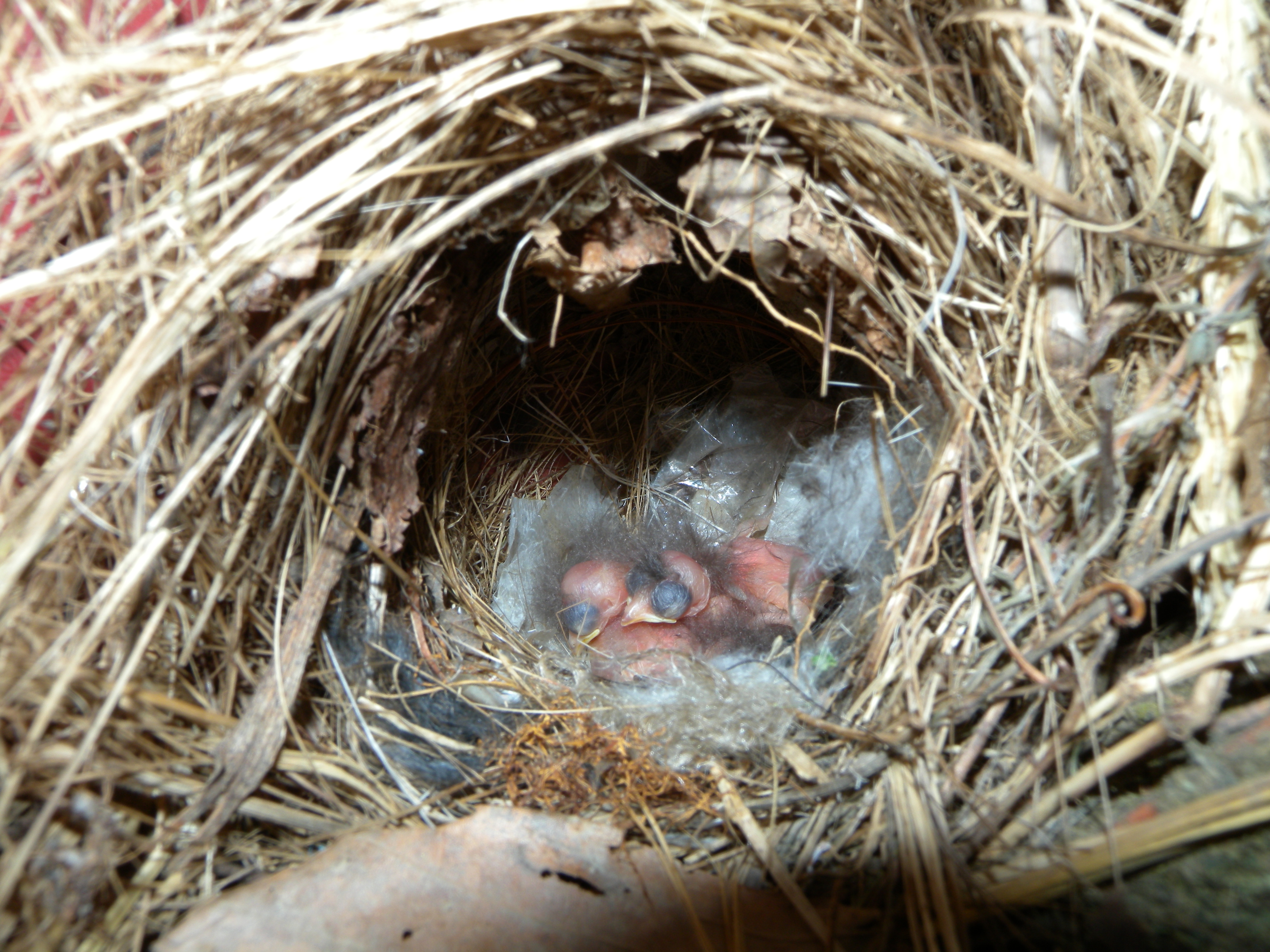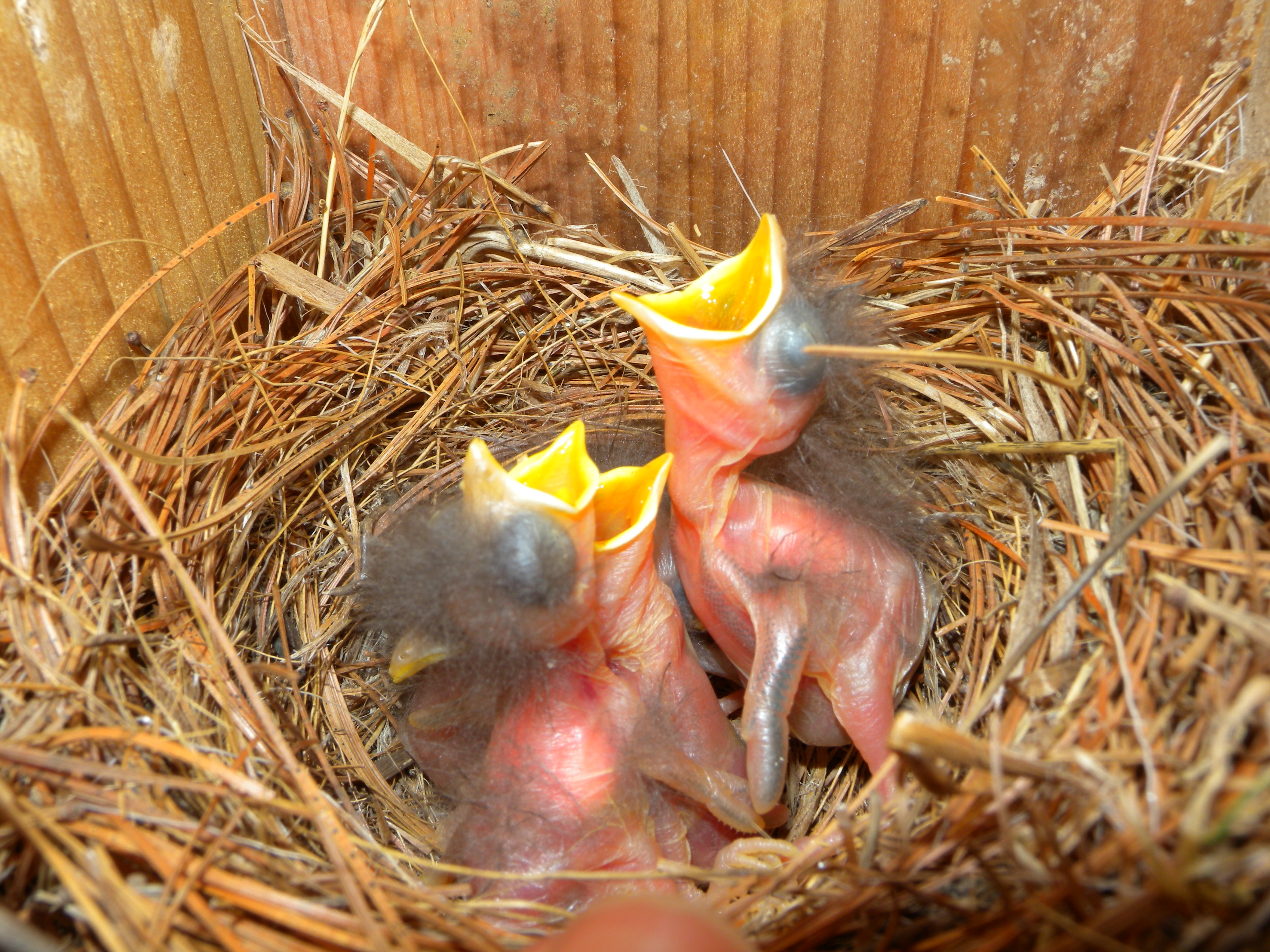
The vernal clock is ticking, the fervent winds from the South are rising, and I can almost hear the steady beating of the wings as the migrant wave swells steadily northward. The birds that have already arrived or passed through seem to be twittering, “The tide is coming, the tide is coming!”, as they hurriedly move on or get right down to reserving the best territories before the crowd comes.
The crowd is indeed coming! Birders have been reporting that migration is “raging” in the south, and birds in the east that have been bottled up by the recent storms just moved north in massive numbers in the last couple of nights. Although it is still a bit early for neo-tropical migrants here, we can expect to see increasing numbers of warblers, vireos, tanagers, orioles and grosbeaks.

Check out this radar image of migration movement south of us last night. The circles of blue indicate migrating birds, while the irregular patterns are storms. Pretty cool, huh? Radar images are being used more regularly in ornithology and birding to help predict bird migration and link bird movements to weather patterns.

We are expecting the banding station to start getting very busy! We have been open for “birdness” (as Lisa Kiziuk, Director of the WCT Bird Conservation Program, puts it) for the past three weeks, and things have been pretty quiet with only half a dozen birds on some days. However, we have had good quality to make up for the lack of quantity: a migrant flock of American Robins, several Brown Thrashers, nice little flocks of White-throated Sparrows, a couple Winter Wrens, Hermit Thrush, a White-eyed Vireo, and a red phase Eastern Screech Owl! A pair of Brown Thrashers are nesting at Rushton Woods Preserve, so we get to listen to the male’s lovely song every morning.

Last week, we captured a recap Common Yellowthroat ; we had banded him in a previous year, so he has returned safely to his summer home! This week, Gray Catbirds arrived, including one of ours that we banded at Rushton last year. Welcome home! I’m never more excited to see a catbird than I am for the first catbird of the year. They become so common so fast, our “bread and butter bird”, but for now the Catbird elicits smiles from ear to ear as if he were a good friend of ours that had been out of touch for years. His beautiful song now fills the woods and our yards with tropical euphony.

Those tiny denizens of the leaves, the wood warblers, should be arriving now that their tree havens have sprung to life. I can’t wait!

Don’t forget about our Warbler Walk at Kirkwood Preserve next Sunday May 6 from 7:30am -10am, led by our federally licensed bird bander and master birder, Doris McGovern! We will meet in the Kirkwood parking lot on Grubbs Mill Road. Please RSVP to me, Blake Goll (bhg@wctrust.org), by May 3.
Also be sure to visit the banding station at Rushton Woods Preserve and Farm as migration picks up. We are open to the public Tuesday and Thursday mornings from sunrise (5:30am) until about 11am (unless it rains). No need to RSVP unless you plan to bring a large group. We band to contribute to global bird conservation efforts, to document the bird populations and species diversity using the preserve, and to connect people to nature through intimate experiences with birds.

PA Young Birders Update
The PA Young Birders had a blast birding and “migrating” this past Saturday at Rushton. The children had a chance to hold the newly hatched and very naked Carolina Wren nestlings, which we borrowed from the funky weed wacker nest. What was Mama Wren thinking? Needless to say, our farm staff will be short one weed wacker this season! What a perfect picture of farm and nature existing in harmony.




The Young Birders also got their exercise racing against each other in an obstacle course that simulated bird migration and the many (often human imposed) hazards birds must face. These hazards included having to find food and water while avoiding being eaten by cats and other predators, weaving in and out of buildings in a city, avoiding glass windows, flying over habitat destruction and around windmills, and dodging cars! (No children were injured in this simulation).

The next PAYB meeting, “Spring Migration Morning at the Rushton Woods Preserve Banding Station” will be held Saturday May 19, 9am-11am. The children will experience songbirds in the hand and science in the field during the peak of spring migration at Rushton. We offer this unforgettable memory to children for free, but a donation of $5 per child is suggested to help us maintain our special outdoor classroom and quality educational programs. Please RSVP to me, Blake Goll (bhg@wctrust.org).

Also coming up is the Pretty Big Bird Day , May 12 from as early as you wish until 6pm. Click here for more information about the event. This event is a friendly competition between teams to see who can spot the most species in the Willistown area. Families and birders of all ages are welcome! Form your own team or join an existing one by contacting Dick Eales at REales@gmail.com. Any interested PA Young Birders should contact me, Blake Goll (bhg@wctrust.org), by May 8th to join my team for a couple hours of the competition!
Early Spring Babies
Here is a picture of the happy bluebird babies in my own backyard. They all hatched successfully before the egg- pecking House Wren returned, and they are just 4 or 5 days from fledging! Unfortunately, the bluebird family at Rushton was not so lucky. They nested much later than mine, and their eggs were pecked this week by the aggressive House Wren. Hopefully, once the wren gets busy with his own nest, the bluebirds will have a chance. We also plan to place three more bluebird boxes at Rushton in a more open area of the fields, far away from the hedgerow. Bluebird boxes that are too close to hedges or the edge of woods are at high risk for wren predation.

The skies are alive at Rushton with the theatrical dynamics of the Tree Swallows, which are starting their nests. Fred De Long, Director of the Farm, remembers when there was only one lone pair of swallows 3 years ago when the farm was just starting out. This year, there are several pairs; like the orioles, the swallows seem to be flourishing with the maturation of the sustainable farm nestled in the nature preserve.

Lisa Kiziuk has a family of House Finches that nested in her wreath at her home. The babies have already fledged and the TAP students ( The Achievement Project of Chester), who have been learning about the farm and birds, were thrilled to have a chance to cradle the charming nestlings in their hands last week. House finches were once sold as pets and called Hollywood Finches; their sweet and amusing dispositions coupled with their beautiful song make it easy to see why they were desirable pets!


Happy Belated Birthday to John James Audubon!
Born on April 26, 1785, he is one of the most celebrated French-American ornithologists, naturalists, and painters. His seminal work, “The Birds of North America,” is considered the finest ornithological work ever completed and can be viewed online here. This online version is definitely not as fabulous as the real thing (which is a wonderful coffee table book!), but fun to browse nonetheless.

Excuse me, but I must go plant a tree for the birds…
Happy Arbor Day!
~Blake



